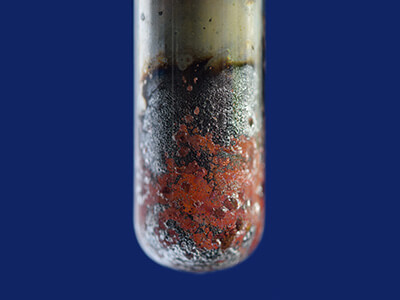This is a lesson summary. The full lesson can be viewed by purchasing an online course subscription.
Learning Objective
In this lesson we will learn about the chemical reactivity of metals and some of the different reactions involving metals.
Learning Outcomes
By the end of this lesson you will be able to:
- Describe how metals form ions when reacting.
- Write the products of:
- Metal-oxygen reactions.
- Metal-water reactions.
- Metal-acid reactions.
- Metal displacement reactions.
- Metal-halogen reactions.
- Use the reactivity series to predict whether a particular chemical reaction involving a metal will take place.

(Image: Tim, Adobe Stock)
Lesson Summary
- Metals react by losing electrons to form positive ions as part of ionic compounds.
- The reactivity series of metals lists metals from most reactive to least reactive.
- This can be used to predict whether a chemical reaction will take place or not.
- Almost all metals react with oxygen to produce metal oxides.
- metal + oxygen → metal oxide
- Most metals react with dilute acids to produce a salt and hydrogen.
- metal + acid → salt + hydrogen
- Some metals react with water to produce metal hydroxides and hydrogen.
- metal + water → metal hydroxide + hydrogen
- Metals can react with ionic salts if the metal is more reactive than the metal in solution.
- metal-1 + metal-2 salt → metal-2 + metal-1 salt
- These are known as metal displacement reactions.
- All metals react with halogens to produce metal halides.
- metal + halogen → metal halide
- All metal reactions are redox reactions, as they involve the transfer of electrons.

Reactivity of metals in dilute sulfuric acid.
(Image: Capaccio, Wikimedia Commons)
(Header image: 3dman_eu, Pixabay)
